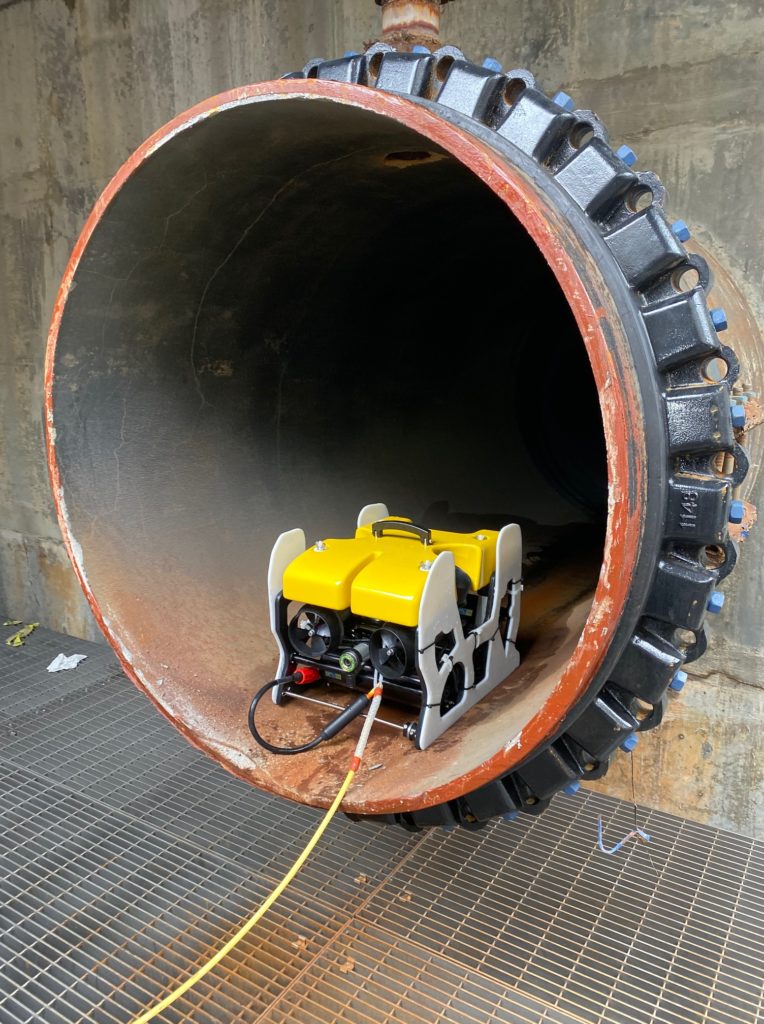Remotely Operated Vehicles (ROVs) have played a significant role in pipeline maintenance, inspection, and repair for decades. They were first developed in the 1960s and 1970s for use in the offshore oil and gas industry. Since then, ROV technology has advanced significantly. Now, ROVs are used in a wide range of industries including subsea cable installation, hydrographic survey, and environmental monitoring. The SEAMOR ROVs and technology have been active in those, among other, sectors since 1989.
Reasons to get your own ROV
One of the main advantages of using ROVs for pipeline maintenance is their ability to operate in environments that are dangerous or inaccessible to humans. Pipelines can be found deep underwater, in harsh weather conditions, or in areas contaminated with hazardous materials. As you’ve guessed, divers cannot easily access these areas. An additional benefit ROVs bring to the table, is that they do not require pipes to be drained for inspection. In many cases, business can continue as usual. ROVs are equipped with cameras, sonar, and other sensors that allow them to inspect pipelines for signs of damage or corrosion. Alternatively, they can also be equipped with tools for repair and maintenance tasks.
Depending on the job that needs to be done, different ROV models can come to the rescue. The SEAMOR Mako, for example, has a payload of up to 22.5kg or 49.6lbs. In other words, it can carry several additional tools. Many use sensors, cameras, lights or robotic arms to aid in maintenance and inspection tasks. If the job at hand is mostly inspection based, perhaps a smaller, lighter model like the SEAMOR Steelhead is better suited. At the end of the day, each job has its own requirements. ROVs are built to accommodate those exact needs. For pipeline inspection in particular, a back-facing camera might be worth a look.
ROV hero stories in repair and maintenance
Over the years, ROVs have been involved in many memorable events related to pipeline maintenance. One notable example is the Deepwater Horizon oil spill in 2010, where ROVs were used to help control the flow of oil from the damaged wellhead. ROVs were also used to help inspect the damaged wellhead and to install a containment cap on the well. In addition, ROVs have been used in many subsea cable repair operations, one of the most famous is the repair of the Hibernia Telecommunications Cable in 1997, this ROV had to work at a depth of over 500m and repair a 6 inch cable in a heavy storm which was a big milestone.
ROVs today and tomorrow
ROV technology has continued to advance, with improvements in sensors, communications, and autonomy. As these technologies continue to improve, ROVs are likely to become even more capable and versatile in their ability to inspect, maintain, and repair pipelines. Some examples of new technologies and innovations include:
- Advancements in Artificial Intelligence, Machine Learning, and Computer Vision that allow ROVs to better understand and analyze the data they collect.
- Development of hybrid ROVs may happen soon. Hybrids combine the capabilities of both ROVs and autonomous underwater vehicles (AUVs). These ROVs aim to provide increased flexibility and autonomy in pipeline inspections and repairs.
- New materials and manufacturing techniques that make ROVs more durable, energy efficient and cost-effective. By extension, also better for the planet.
- Remotely-controlled manipulator arms with increased dexterity and strength which will allow ROVs to complete a greater range of tasks.
Overall, ROVs continue to play a crucial role in maintaining, inspecting, and repairing pipelines and will likely continue to do so in the future as technology continues to improve. With increasing capabilities and autonomy, ROVs are likely to be used for an even greater range of pipeline-related tasks, improving the efficiency and effectiveness of pipeline maintenance and repair operations.
For more information about ROVs and how to get your own ROV custom built for your organization and its needs: get in touch with us here. You can also find more information on our “Applications” or “Products” pages. More cool stories about SEAMOR ROVs can be found here.

